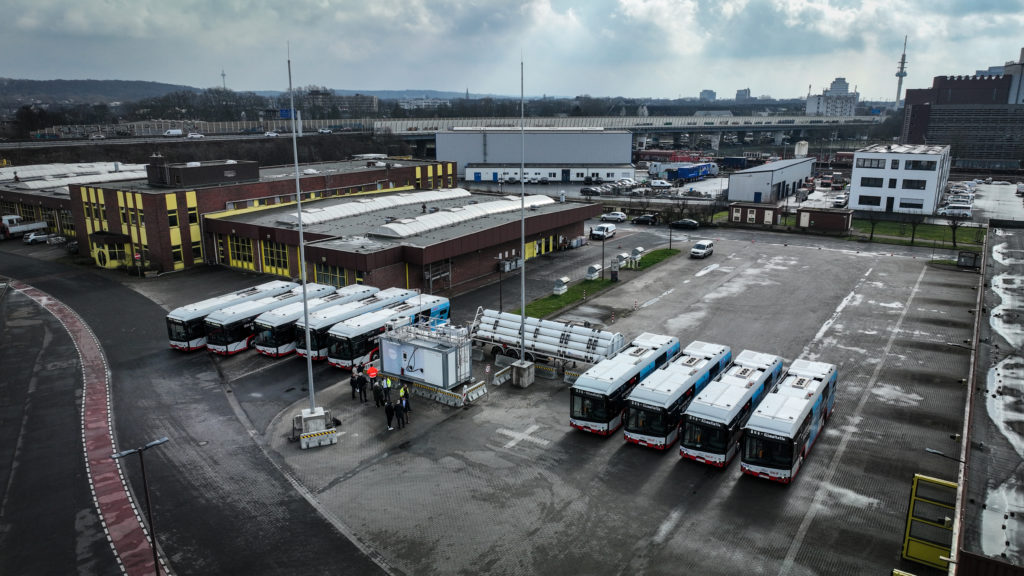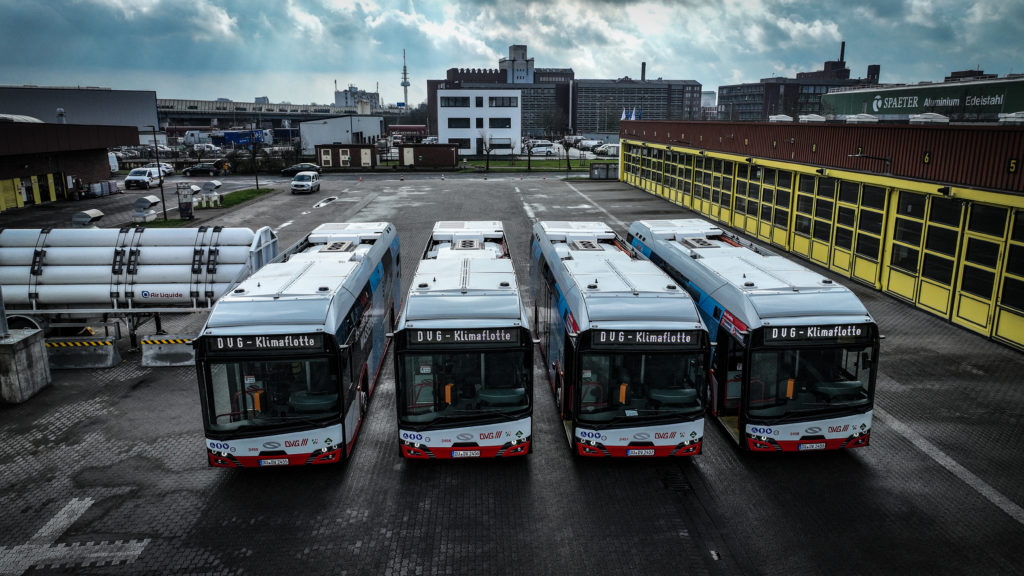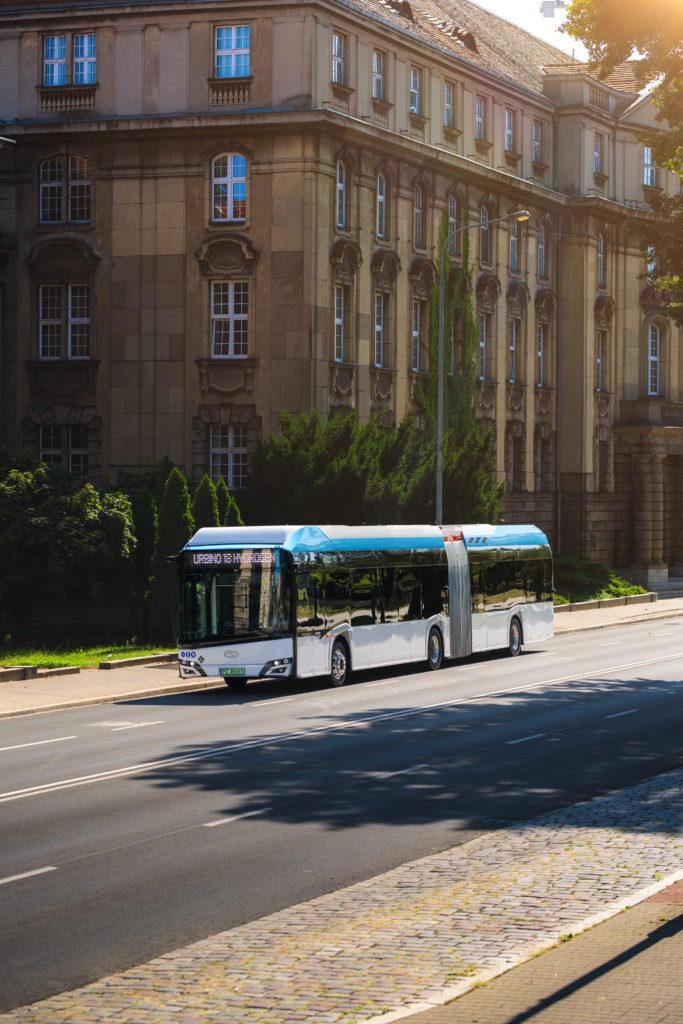FIRST SOLARIS
HYDROGEN BUSES
ARRIVE IN DUISBURG
Starting from March 1, 2025, public transport passengers in Duisburg will be able to travel aboard hydrogen buses. This milestone marks the delivery of the first 11 Solaris Urbino 12 hydrogen buses to the operator Duisburger Verkehrsgesellschaft AG (DVG). In total, DVG’s fleet will be expanded with 25 hydrogen-powered fuel cell buses, including 14 articulated units. This is a significant step towards the transformation of local public transport, with an ambitious goal set for 2030 – to replace the entire diesel-powered fleet with zero-emission vehicles.
A NEW ERA FOR PUBLIC TRANSPORT IN DUISBURG

On February 26, 2025, the first Solaris Urbino 12 hydrogen buses were officially unveiled before entering regular service in Duisburg. These are the first hydrogen-powered buses in the city’s fleet. The ceremonial handover was attended by representatives of Solaris, the operator, and local authorities, including Oliver Krischer, Minister of Transport for North Rhine-Westphalia, Sören Link, Mayor of Duisburg, and Oliver Wittke, spokesperson for the Board of the Rhine-Ruhr Transport Association (VRR).
We are extremely proud that the city of Duisburg has chosen us as a partner to introduce hydrogen technology to its public transport. Hydrogen buses are state-of-the-art technology improving the quality of air in the city and, at the same time, they offer long ranges and superior travel comfort. We have delivered to German operator more than 250 hydrogen buses with many more to follow, including 14 articulated Urbino 18 hydrogen for the Duisburger Verkehrsgesellschaft AG (DVG)

INWESTING IN THE FUTURE
For years, Duisburg has been committed to sustainable transport solutions, and the delivery of the first Solaris hydrogen buses is a key milestone in the city’s strategy. The total investment in 25 hydrogen buses, along with the necessary refueling and maintenance infrastructure, exceeds 40 million euros. Of this amount, 25 million euros are subsidized by the VRR and the federal government. This project brings Duisburg closer to its goal of replacing all diesel buses with zero-emission vehicles by 2030.
We want to encourage more people to switch to buses and trains. This can be achieved with attractive local transport offers, for example with modern hydrogen buses. That is why the state was happy to promote the switch to climate-friendly drives like here in Duisburg: I am pleased that the new hydrogen buses are now starting operations and will from now on be climate-friendly in Duisburg’s city traffic
Duisburg is a city that has been committed to environmentally-friendly public transport solutions for a long time now. This commitment is driven by the desire to innovate urban transport locally, but is also an important contribution to comply with the provisions of the Clean Vehicles Directive. The city has therefore decided to replace its entire fleet of combustion-engine buses with hydrogen vehicles by 2030.
SOLARIS URBINO HYDROGEN –THE TECHNOLOGY OF THE FUTURE

DVG has ordered a total of 25 hydrogen buses. The first 11 delivered vehicles are 12-meter-long models, while the remaining part of the order consists of 18-meter articulated buses.
The Solaris Urbino hydrogen buses are quiet and emission-free, powered by fuel cell systems. In these hydrogen buses, electrical energy is generated through reverse electrolysis of water and directly supplied to the drive system, making them environmentally friendly and free of harmful emissions.
Passenger comfort and safety are ensured by an efficient air conditioning system with a heat pump, monitoring systems, and a modern passenger information system. Drivers will benefit from advanced assistance systems (ADAS), including pedestrian and cyclist detection in blind spots, which alerts the driver with visual and audible signals. The eSConnect system, developed by Solaris, will support fleet monitoring and management in daily operations.
Last year, we spoke with Harald Boog, Head of Vehicle Management at DVG, about key aspects of cooperation with Solaris and the region’s hydrogen transport plans.







